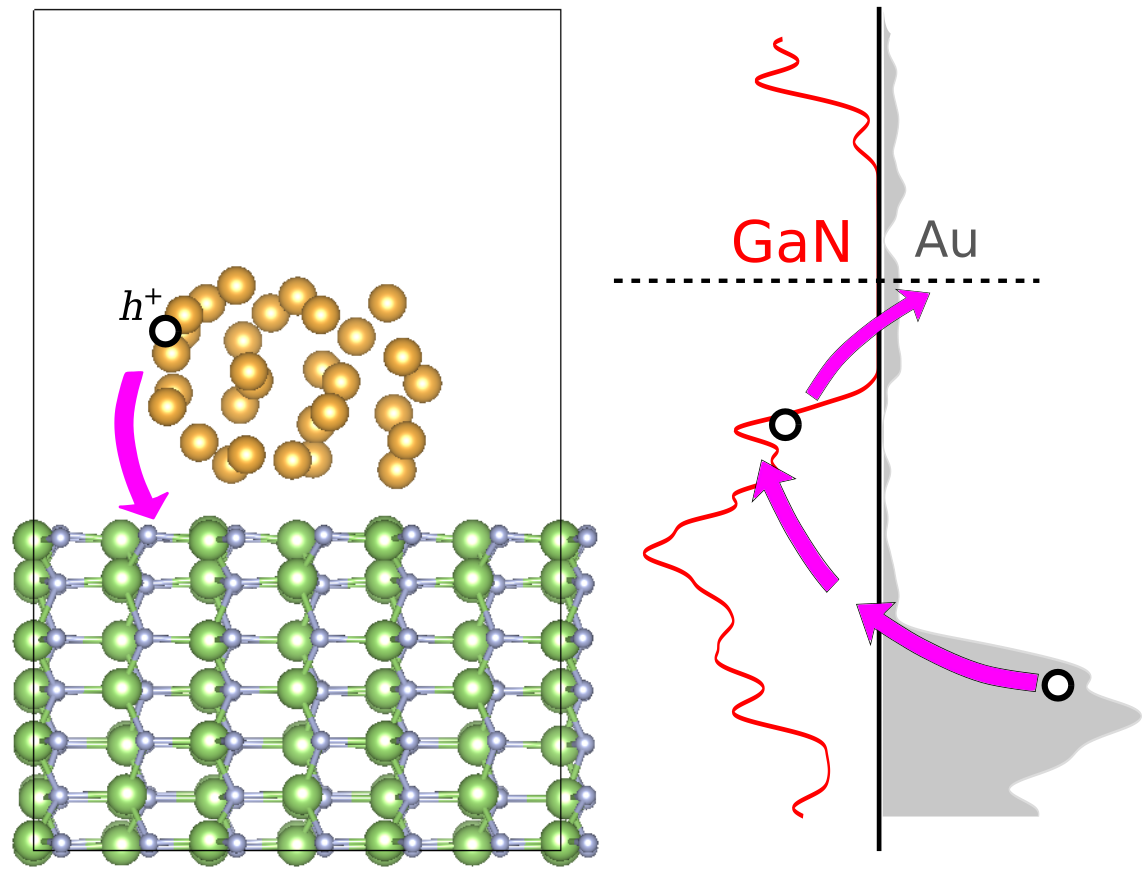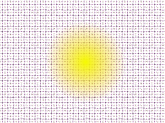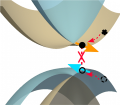Research
Hot-carrier cooling and charge transfer across interface

Plasmon photochemistry can potentially play a significant role in photocatalysis. To realize this potential, it is critical to enhance the plasmon excited hot carrier transfer and collection. We apply the non-adiabatic molecular dynamics (NAMD) simulation to study hot carrier dynamics in the system of Au nanocluster on top of GaN surface. By setting up the initial excited hole in Au, the carrier transfer from Au to GaN is found to be on a sub-pico second time scale. By applying different external potentials to mimic the Schottky-barrier band bending, the charge transfer efficiency can be enhanced, demonstrating the importance of the internal electric field. Finally, with the understanding of the carrier transfer’s pathway, we suggest that a ZnO layer between GaN and Au can effectively block the “cold” carrier from returning back to Au but still allow the hot carrier to transfer from Au to GaN. more
Large Polaron Formation and its Effect on Electron Transport in Halide Perovskite

Many experiments have indicated that large polaron may be formed in hybrid perovskite, and its existence is proposed to enhance the long lifetime for the carriers. However, detailed theoretical study of the large polaron and its effect on carrier transport at the atomic level is still lacking. Here, we implement tight-binding model fitted from the density-functional theory and we find that the formation energy of the large polaron is around -12 meV. By performing the explicit time-dependent wavefunction evolution of the polaron state, the diffusion constant and mobility of the large polaron state driven by the dynamic disorder and the sublattice vibration are obtained. more
Rashba effect in halide perovskite

Halide perovskites are promising solar-cell materials for next-generation photovoltaic applications. The long carrier lifetime and diffusion length of these materials make them very attractive for use in light absorbers and carrier transporters. While these aspects of organometal halide perovskites have attracted the most attention, the consequences of the Rashba effect, driven by strong spin- orbit coupling, on the photovoltaic properties of these materials are largely unexplored. In this work, taking the electronic structure of CH3NH3PbI3 (methylammonium lead iodide) as an example, we propose an intrinsic mechanism for enhanced carrier lifetime in three-dimensional (3D) Rashba materials. On the basis of first-principles calculations and a Rashba spin-orbit model, we demonstrate that the recombination rate is reduced due to the spin-forbidden transition. more